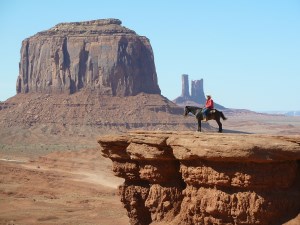
The early American West was expanded and built up by settlers and pioneers. In 1776, the United States became independent, which attracted people from Europe. These people, who then moved to the American frontier, were called “settlers.” Most settlers made their homes in the eastern half of what is now the U.S. It wasn't until 1803, after the US. purchased territory from France, that many settlers traveled West.
In 1848, at the end of the Mexican-American War, even more people started to travel farther West. These people were called “pioneers.” They traveled in covered wagons and on horse. Later, the invention of the railroad helped to open up settlements in the west at a more rapid pace.
Pioneers cleared wild western land by chopping down trees. They built homes and farmed the land. Because there were no towns or grocery stores here for some time, pioneers depended on their crops. And if the crops didn't grow, the pioneers had to gather food from nature.
The California Gold Rush of 1848, and smaller Nevada and Colorado Gold Rushes of 1859 attracted thousands of people from all over the world to the West. In 1862, the U.S. government passed the Homestead Act, which promised 65 acres of land for each family who settled here and farmed the land for at least five years.
The Homestead Act helped populate the west, to be sure. New pioneers built towns and cites all over the West; however, the land sold to them was stolen from the Native Americans who had lived there first.
Now, much of the American West is settled almost just as much as any other part of the country is. It took decades of bold exploration and innovation to make the western frontier what it is today.
[Source:
World History Encyclopedia
]

